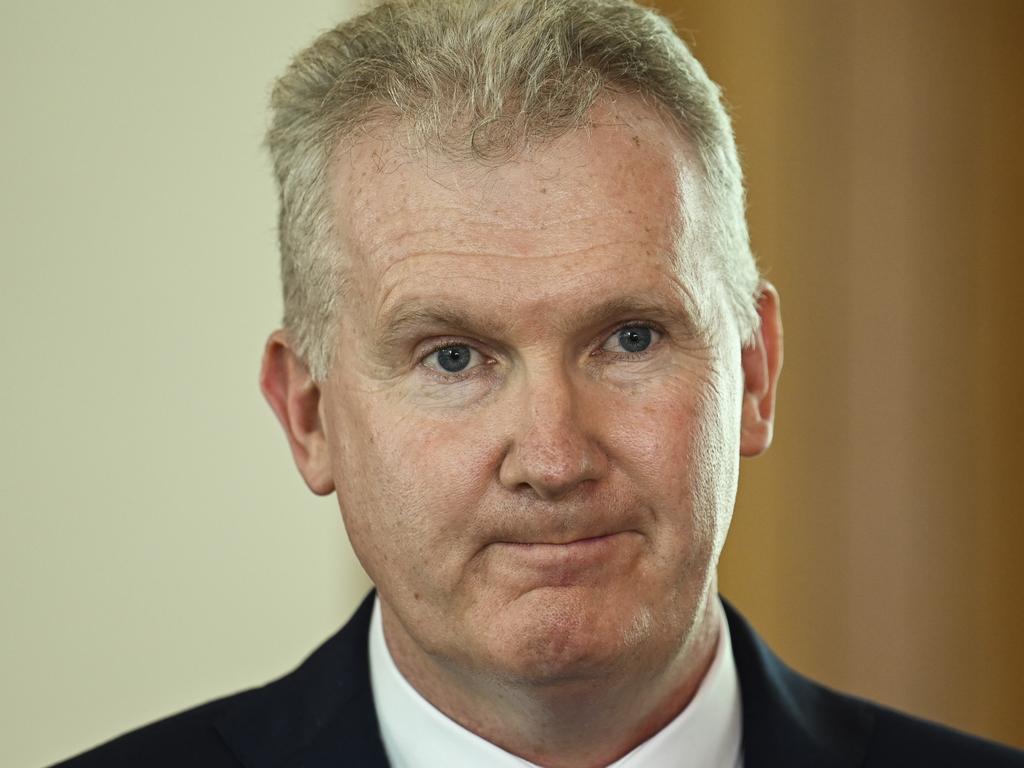Jim Chalmers can return the federal budget to balance within nine years: PwC Australia
Jim Chalmers can return the budget to balance within nine years and reduce debt to near zero by 2045, PwC Australia modelling shows.

Jim Chalmers can return the budget to balance within nine years and reduce debt to near zero by 2045 if the government cuts spending by $50bn or more over a decade, expands its aggressive savings drive and reins in exploding NDIS, defence, aged care and general health costs.
PwC Australia modelling obtained by The Australian reveals the government must implement a long-term budget repair strategy and avoid baking in higher expenditure if it is to minimise net debt and interest payments.
While soaring commodity prices and windfall tax revenues are projected to deliver a lower $15bn deficit in 2022-23 – a significant improvement on record Covid-era deficit and debt levels – the burden on taxpayers will worsen if the government baulks on “hard choices”, the modelling says.
Dr Chalmers said it would take multiple budgets to get the nation’s books in shape and warned pressures on the bottom line would intensify rather than ease. While confirming he would deliver a “substantial improvement in the bottom line this year and next”, the Treasurer said paying down debt and funding the NDIS, aged care, health and defence were heaping stress on the budget.
“It will take more than one budget or even one term of budgets to get our nation’s finances back on a sustainable footing. The May budget will continue our measured and responsible steps to clean up the budget mess we inherited from our predecessors,” Dr Chalmers said.
“Although the spending restraint we’ve shown will deliver a substantial improvement in the bottom line this year and next, the pressures on the budget after that intensify rather than ease.”
Dr Chalmers – who attacked the Coalition for failing to fund essential programs in the budget, including My Health Record – said “at a time of global uncertainty and high inflation, the Albanese government’s responsible economic approach is more important than ever”.
PwC Australia chief economist Amy Auster said major improvements in the budget bottom line had “put a balanced budget in sight within a decade” but warned that fiscal discipline was key.
“To achieve this would require a deliberate strategy of prioritising areas where expenditure will grow, managing this growth closely, and funding those increases from savings elsewhere within the budget. Australia is a wealthy nation and we can afford anything – but we can’t afford everything,” Ms Auster said.
With Treasury predicting an economic slowdown and sticky inflation, Ms Auster said cost-of-living support must be “very targeted and very temporary (because) too much relief will stoke inflation and ultimately escalate and prolong cost pressures and higher interest rates”.
“This has every chance of shaping up to be a ‘bread and butter’ budget as Australia heads into what could be the most challenging environment we have faced in over 30 years as real GDP growth slows from 2.75 per cent to a projected 1.5 per cent in 2023, led by a downturn in consumption,” she said. “To quickly tame inflation and ensure our economic downturn is short and shallow, we need the government to keep a steady hand on the bottom line, avoid a cash splash and chip away at the structural deficit to set us up for long-term economic success.”
The PwC modelling is based on the government shaving 0.15 per cent of GDP off expenditure each year over a decade, bringing total expenditure down to 25.4 per cent of GDP by 2031-32.
“If the budget then moved to surplus in 2034-35, our scenario analysis shows net debt could be reduced to zero by around 2045-46. Slowing expenditure growth to below the rate of GDP growth could only be achieved by actively cutting back the 2 per cent of GDP structural deficit outlined by Treasury in the October budget,” the analysis states.
“A reduction in expenditure cannot be assumed, and would require some hard choices.”
The analysis states that failure to manage medium-term spending growth in the big bucket areas of aged care, NDIS, health, defence and debt servicing would “increase the amount of revenue the government would need to attain via tax … and limit the potential growth rate of the Australian economy far into the future”.
“While these billions of dollars are eye-watering sums, they must be placed in the context of a $650bn budget operating in a $2.6 trillion economy.”
Stage three tax cuts, reducing income tax revenue by $38.5bn over four years, total health expenditure of $112bn by 2025-26, interest rate-fuelled debt servicing costs and higher defence spending are identified as looming budget pressures.








To join the conversation, please log in. Don't have an account? Register
Join the conversation, you are commenting as Logout